|
|
|
|
[Index]
[Back] |
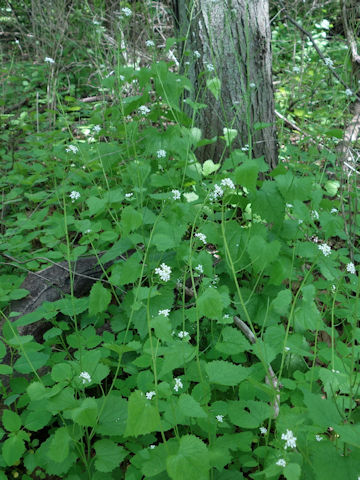 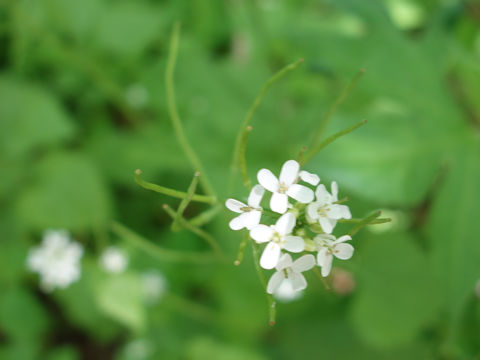 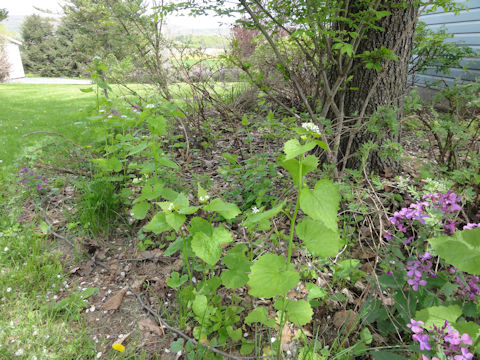  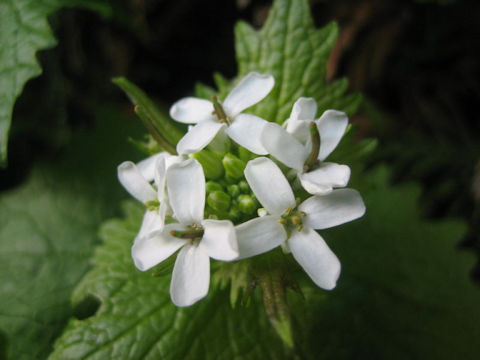 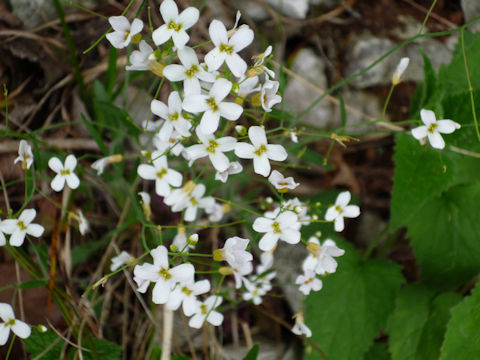 |
|
|
|
ヨーロッパや西・中央アジア、それに北西アフリカに分布しています。生け垣などの縁に生え、高さは30〜100センチになります。葉は葉柄があり三角状から心形で、潰すとにんにくの臭いがあります。春と夏、ボタンのような花序に白色の花を咲かせます。個々の花には4個の花弁があり、十字対生します。果実は真っ直ぐな細い、4稜のある長さ4〜5.5センチの豆果です。17世紀、イギリスでは塩漬けの魚の香り付けに推奨され、または、焼いたラム、サラダのソースとしても使われていました。別名で「ねぎはたざお(葱旗竿)」とも呼ばれます。「にんにくがらし」は、1800年代にヨーロッパの開拓者によって料理や薬用として北アメリカに導入され、それ以来北アメリカ全土に広がりました。 |
|
|
アブラナ科アリアリア属の二年草で、学名は Alliaria petiolata。英名は Garlic mustard。 |
|
|
The Garlic mustard (Alliaria petiolate) belongs to Brassicaceae (the Mustard family). It is a biennial herb that is native to Europe, western and central Asia, and northwestern Africa. This herb grows along the margins of hedges, and it can reach 30-100 cm in height. The leaves are stalked, triangular to heart-shaped, when crushed smell like garlic. The white flowers bloom in button-like clusters in spring and summer. Each small flower has four white petals, and arranged in a cross shape. The fruits are erect, slender, four-sided pods 4 to 5.5 cm long. In 17th century Britain it was recommended as a flavoring for salt fish. It can also be made into a sauce for eating with roast lamb or salad. Garlic mustard was introduced to North America by European settlers in the 1800s for culinary and medicinal purposes, and has since spread all over North America. |
|
|
[上・中1] アメリカ・オハイオ州「チャールストン滝」にて、2016年05月22日撮影。(photo by Jon Suehiro) [中2・中3] アメリカ・ペンシルベニア州ステートカレッジにて、2011年05月02日撮影。(photo by Jon Suehiro) [中4] イギリス・ランカシャー州ハーストグリーンにて、2015年05月12日撮影。(photo by Yumi Gunji) [下] クロアチア・プリトヴィッツェ「湖群国立公園」にて、2012年04月30日撮影。(photo by Aya Suehiro) |
|
|
|
Shu Suehiro |